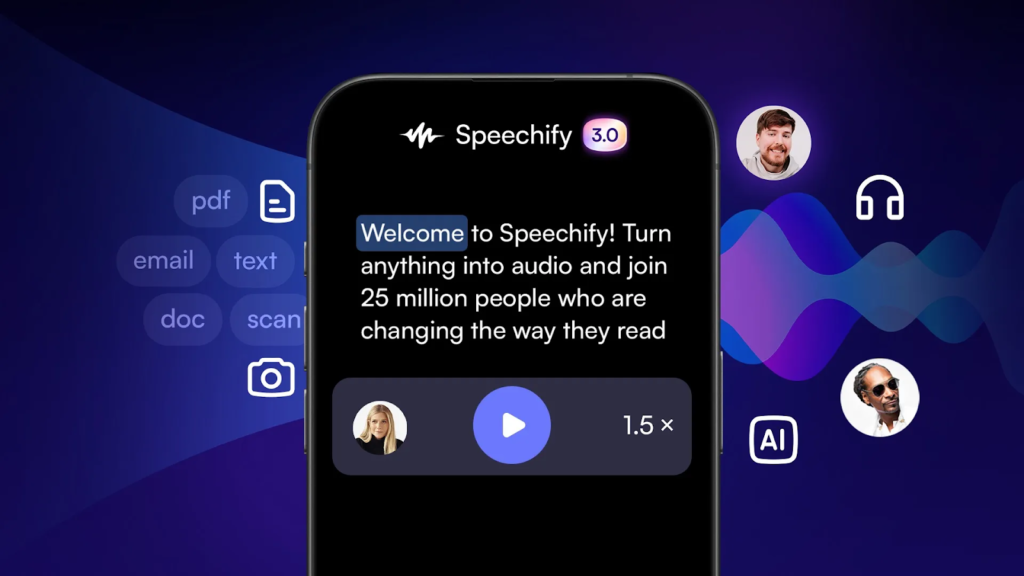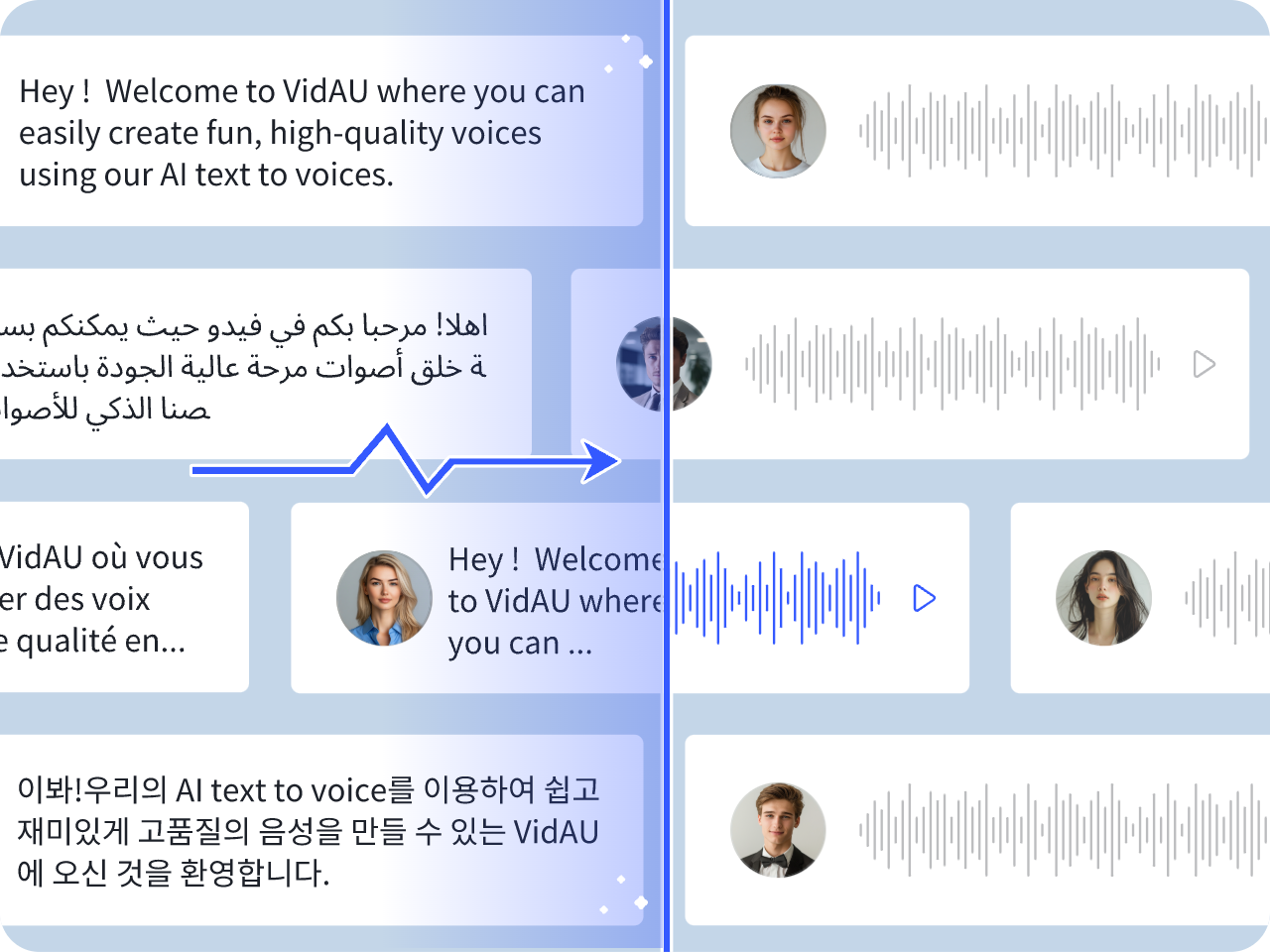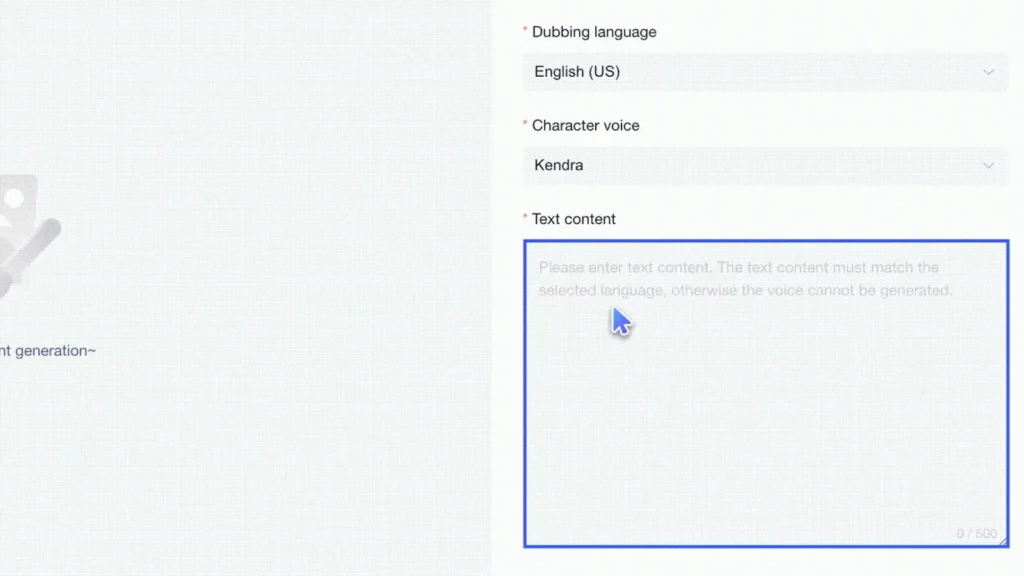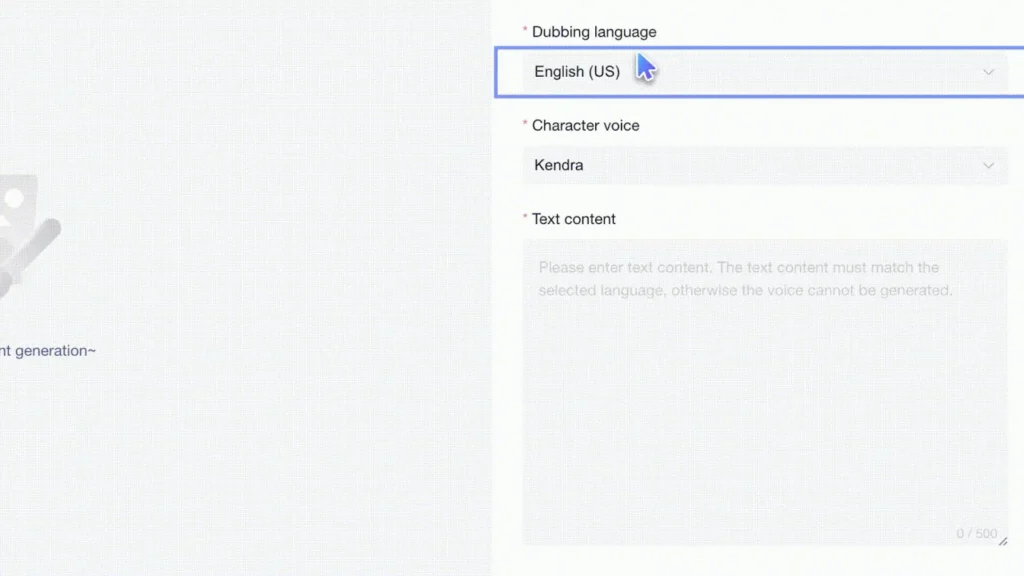
What is Text-to-Speech AI?
Text-to-Speech AI refers to the technology that converts written text into spoken words using artificial intelligence. This technology employs deep learning algorithms and natural language processing to produce human-like speech. It can mimic human speech, including intonation, pitch, and rhythm, making the audio output sound natural and engaging.
Benefits of Using Text-to-Speech AI
The benefits of TTS AI are as follows:
● Accessibility: TTS is a wonderful tool for people with visual impairments or those who struggle with reading. For instance, a blind student can now listen to e-books or academic materials read aloud by a TTS AI. This allows them to access information independently and without the need for a human reader. This not only promotes inclusivity but also empowers individuals to learn and engage with content at their own pace.
● Convenience: With TTS AI, users can listen to content while doing other tasks. Imagine a professional driving to work. They can listen to the news or a report. This feature is great for busy people. It helps them stay informed without wasting time.
● Content Engagement: TTS AI also plays a vital role in enhancing content engagement, especially for auditory learners who prefer to learn through listening. For example, a podcast producer can use TTS AI to convert written scripts into spoken word, reaching a wider audience that includes not only readers but also those who prefer auditory content. This diversification of content delivery can significantly increase the reach and impact of educational and entertainment materials.
Applications of Text-to-Speech AI

TTS AI finds applications across various fields:
● Education:
TTS AI is a valuable tool for students. With it, students can quickly and easily create voice overs for their projects and presentations. If students want to make a presentation in another language, those multilingual TTS platforms can help. Using such speech synthesis platforms, students can create voice over videos that are perfectly synced with images, videos, and background music.
Before exams, students can use TTS AI to convert teaching resources like textbooks, worksheets, quizzes, and reading materials into interactive audiovisual media. This can help them improve their learning efficiency. TTS AI also makes language learning become more accessible. A beginner in Spanish, for instance, can listen to vocabulary and phrases pronounced correctly by TTS AI, helping them to practice pronunciation and improve their listening skills.
● Healthcare:
TTS AI plays a significant role in healthcare, particularly for patients with communication disorders. It can read out medical instructions or reminders, ensuring that patients understand their treatment plans. In therapy sessions, TTS AI can be used to provide auditory feedback, aiding in speech therapy exercises. For example, a patient recovering from a stroke might use TTS AI to practice speaking and improve their speech clarity.
● Content Creation:
For content creators, TTS AI is a time-saving asset. Bloggers can quickly convert their articles into audio format, reaching a wider audience. Podcasters can use TTS AI to generate voiceovers for their episodes without needing a professional voice actor. Video creators can also benefit, as they can add narration to their videos with minimal effort.
● Customer Service:
Customer Service: TTS AI improves how customers feel. It makes automated phone systems sound more natural. These systems can answer questions and help customers easily. They make talking to customer service quicker and better. For example, if a person calls their bank, they’ll hear a friendly greeting from the TTS AI. It will tell them what choices they have. It can even answer easy questions. This means they don’t have to wait long. It makes customers happier with the service they get.
What are the Five Best Text-to-Speech AI (2024)?
With numerous TTS AI tools available, selecting the best can be challenging. Here are the top five TTS AI tools for 2024:
VidAU
VidAU is a creative AI video generator, whose text to AI voice service enables you to convert text to AI voices. It offers a range of voices in multiple languages, making it ideal for global users. The platform is known for its realistic and expressive speech synthesis, making it a top choice for content creators.
Murf

Murf is renowned for its extensive customization options and great voice quality. It provides users with the ability to tweak pitch, speed, pause, and tone, ensuring the output matches the intended emotion and style. It can also incorporate media with the AI voiceover and change the voice styles.
ElevenLabs

ElevenLabs can generate high quality speech in different voices, styles, and languages.It renders human intonation and inflections with fidelity. Its AI-driven platform is designed to mimic human speech patterns, making it a favorite among creators who need nuanced voiceovers.
Speechify

Speechify can convert text to AI voice on Windows, Mac and mobile phones. that reads text aloud using a computer-generated text to speech voice. It also uses optical character recognition technology to turn physical books or printed text into AI voice.
WellSaid

WellSaid is known for its focus on delivering high-quality voices. It offers different voice and content type options, making it suitable for diverse applications, from marketing videos to educational content. Its API also enables it to be used in different platforms.
Conclusion
Realistic text to speech tools have changed the way we interact with digital content. They bridge the gap between written and spoken word, making information more accessible and engaging. As AI technology continues to evolve, the capabilities of TTS tools will only expand, boosting video creation, education and more industries.









